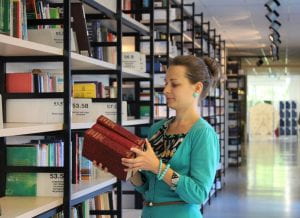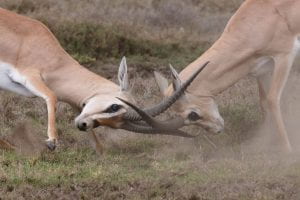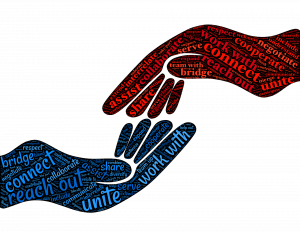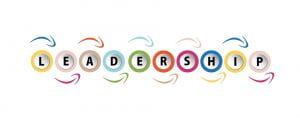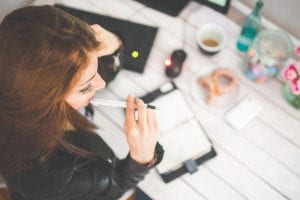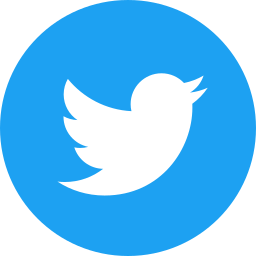The life cycle of information has changed and this impacts on the way people interact. Traditionally it was the teacher who was the source of information and knowledge, now it is a user to user production. Information production is increasing (Bawden & Robinson, 2009, p.181), social networks and web 2.0 tools make connecting with other easier. An expanding digital network will increase access to resources, information, and knowledge within the classroom by interacting with others (Thomas & Brown, 2011, p.17).
Information (Silver, 2019a) has changed, it is now produced and shared by a variety of means. This has implications for end users, in how they interpret the information and credit it. These factors will become more of an issue in the future as knowledge creation becomes more socially constructed.
Being able to locate and evaluate a range of innovative online tools and spaces for creative knowledge production and learner engagement are important skills for a connected educator. Skype (Silver, 2019b) is one learning tool that can be used to introduce authentic learning to students and increase learner engagement. The post also identifies extra Skype sites plus suggestions for other apps that could be used instead of Skype. Twitter, Google Docs and Google classroom also have benefits as a communication tool for students to collaborate.
Another learning space offered by connected educators is the flipped learning approach as detailed here (Silver, 2019c) which could prove beneficial in a library setting. This would work particular well for skills such as referencing, how to access and use catalogues and demonstrations on how to use digital tools. Using this model of teaching would then free up library time to hold in-depth discussions and allow for more collaborative or individual work, depending on the learner’s needs.
Online tools that have been used for creative knowledge production include Powtoon and Screencastify, which were evaluated here (Silver, 2019d).
Whilst a small suite of new tools has been established there has been exposure to many new types of tools not heard of/used before. For information management Diigo (Silver, 2019e) has proved a useful cloud-based bookmarking and tagging tool for online sources. However, the full range of Diigo for knowledge networking has not been used, content could be set for public rather than private . Tweetdeck (Silver, 2019f) has been recently utilised for the organisation of information from Tweets, allowing for a greater ease of access to content and categorising of information. New media tools used for content creation include recording from the screen of a mobile and Screencastify and Powtoon. The screen recording on a mobile was utilised to make blog posts about Twitter bookmarks (Silver, 2019g) and give a visual overview of Pinterest (Silver, 2019h). Powtoon and Screencastify were used to create a digital artefact on ‘Using Twitter for beginners to establish a personal learning network’. (Silver, 2019d).
I have as a connected educator also assisted other collegues with their teaching by introducing relevant up-to-date material related to their current subject area being studied in class (Silver, 2019i).
Being able to build on knowledge networking is important to strengthen school-based classroom engagement. At the beginning of the course in my blog on a new culture of learning (Silver,2019j) I stated I felt unconfident in my ability to provide collaborative learning opportunities to my students but hoped with the establishment of my own collaborative network this will change over time. I now feel more confident about introducing knowledge networking strategies to strengthen school-based classroom engagement and learning through intentional and reflective online instructional design. (Silver, 2019b) showed how knowledge networking can be used to strengthen school-based classroom engagement, elements of this such as backchannelling and Skype calls could be utilised in library to give student’s access to authors or experts in the field. Calls can be scheduled from experts of all areas, from authors, scientists and museums. Skype could also be used for virtual field trips and to practise an important information skill of being able to spot fake news.
The digital artefact was created to help educators establish and expand their personal learning networks. Through the use of the digital artefact (Silver, 2019d) information was able to be presented in a manner that was easily accessible to educators and the examples given allowed them to relate the content within context of their own lives and assisted with knowledge production. Twitter was used to broadcast the artefacts Url on YouTube for more educators to view.
Utilising a PLN (Silver, 2019k) through Twitter and following blogs from colleagues and prominent educators has helped deliver ideas for professional enhancement including guidelines on developing questioning, connectivity in the classroom and personal knowledge management on curation tools, such as Evernote and Pearltrees. Collective intelligence has been enhanced by practises through the sharing of Tweets within #INF532 related to course material (link Twitter blog, add detail to blog). I am sure my PLN will be able to benefit me in the future and I them.
Through blog posts the learning objects have been able to be met, some in more detail than others.
References:
Bawden, D., & Robinson, L. (2009). The dark side of information: overload, anxiety and other paradoxes and pathologies. Journal of Information Science, 35(2), 180–191. Retrieved from https://journals.sagepub.com/home/jis
Thomas, D., & Brown, J. S. (2011). Arc-of-Life learning. In A new culture of learning: Cultivating the imagination for a world of constant change (pp. 17-33). Lexington, KY: CreateSpace.
Silver, T. (2019a, March 20). New models of information production [blog post]. Retrieved from https://thinkspace.csu.edu.au/learningawaits/2019/03/20/new-models-of-information-production/
Silver, T. (2019b, May 21). Supporting the connected learner with Skype [blog post]. Retrieved from https://thinkspace.csu.edu.au/learningawaits/2019/05/21/supporting-the-connected-learner-with-skype/
Silver, T. (2019c, May 22). Flipped learning [blog post]. Retrieved from https://thinkspace.csu.edu.au/learningawaits/2019/05/22/flipped-learning/
Silver, T. (2019d, May 22). Making my digital artefact [blog post]. Retrieved from https://thinkspace.csu.edu.au/learningawaits/2019/05/24/making-my-digital-artefact/
Silver, T. (2019e, May 21). Some curation tools reviewed [blog post]. Retrieved from https://thinkspace.csu.edu.au/learningawaits/2019/05/21/curation/
Silver, T. (2019f, May 25). Tweetdeck [blog post]. Retrieved from https://thinkspace.csu.edu.au/learningawaits/2019/05/24/tweetdeck/
Silver, T. (2019g, May 21). How to save a bookmark on Twitter mobile app [blog post]. Retrieved from https://thinkspace.csu.edu.au/learningawaits/2019/05/21/how-to-save-a-bookmark-on-twitter-mobile-app/
Silver, T. (2019h, May 21). A visual overview of Pinterest [blog post]. Retrieved from https://thinkspace.csu.edu.au/learningawaits/2019/05/21/a-visual-overview-of-pinterest/
Silver, T. (2019i, May 25). Twitter – an update [blog post]. Retrieved from https://thinkspace.csu.edu.au/learningawaits/2019/05/25/using-twitter-an-update/
Silver, T. (2019j, March 20). A new culture of learning? [blog post]. Retrieved from https://thinkspace.csu.edu.au/learningawaits/2019/03/20/a-new-culture-of-learning/
Silver, T. (2019k, May 20). What is a PLN? [blog post]. Retrieved from https://thinkspace.csu.edu.au/learningawaits/2019/05/20/what-is-a-pln/


